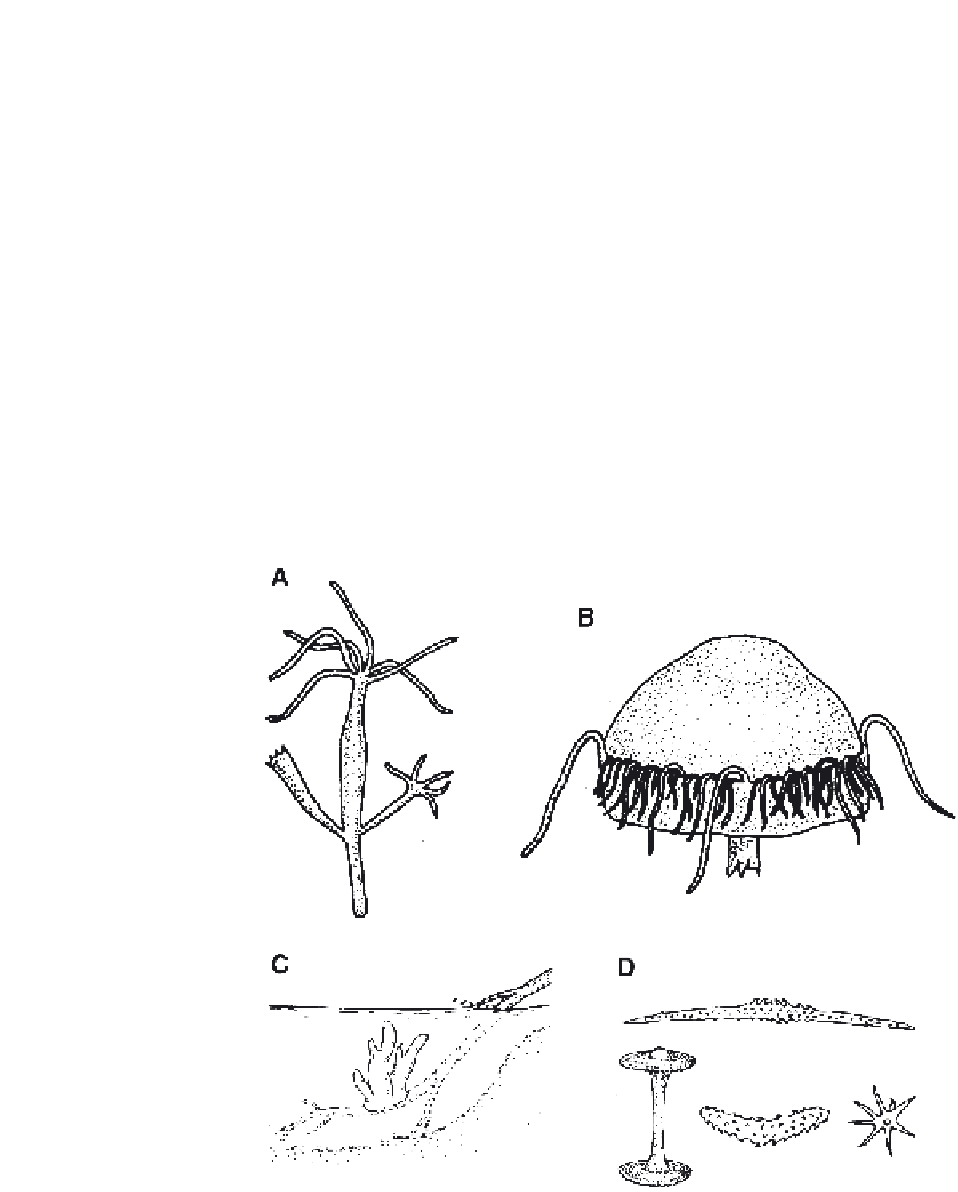Environmental Engineering Reference
In-Depth Information
America and about 300 species worldwide (Frost, 1991). They can be
found in a variety of lentic and lotic habitats and some species have small
ranges, whereas others are widespread. Sponges are among the most prim-
itive animals and obtain nutrition by filtering particles from the water.
Sponges feed on particles ranging in size from several hundred mi-
crometers to smaller than bacteria. They feed selectively by not digesting
and ejecting unsuitable particles. Many species of sponges have algal en-
dosymbionts that provide photosynthate and give them a bright green
color. Most of the species harbor a green alga,
Chlorella,
but some contain
algae from other classes.
Macroscopically, colonies can appear as round clumps, as flattened en-
crusting bodies, or as finger-like growths (Fig. 9.2C). The structure of all
freshwater sponges is made of collagen and silicaeous spicules (Fig. 9.2D).
Sponges have no multicellular organs, but they do have a variety of special-
ized cells, including epithelial cells, flagellated cells that pump water through
a canal system in the sponge, and digestive cells that break down ingested
particles and transport nutrients to various parts of the sponge. Sponges re-
produce both sexually and asexually. Asexual reproduction can range from
simple fragmentation to formation of specialized resistant stages called gem-
mules that are formed for dispersal and survival in marginal habitats.
FIGURE 9.2
Freshwater cnidarians (A and B) and sponges (C and D): (A)
Hydra;
(B)
Craspedacusta;
(C) macroscopic view of a sponge growing on a stick, 20 cm; (D) spicules
made of silicon from several species of sponges (about 50
m each) (reproduced with per-
mission from Thorp and Covich, 1991b).

Search WWH ::

Custom Search